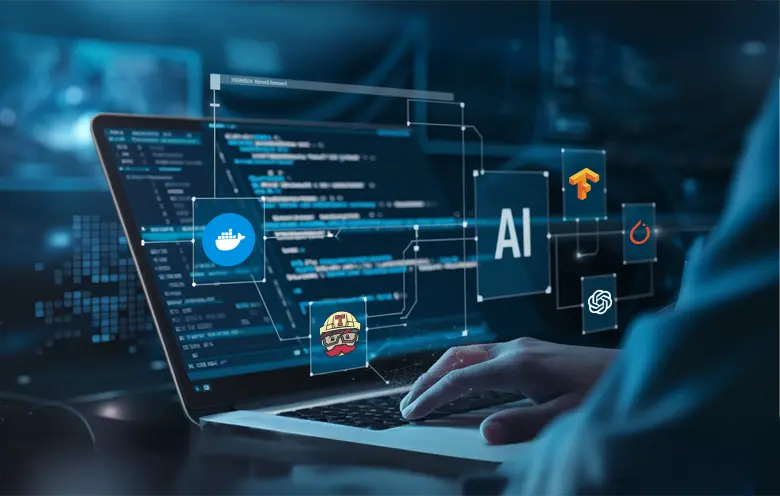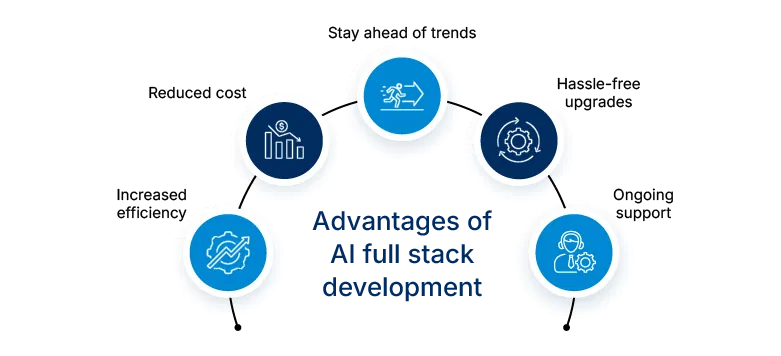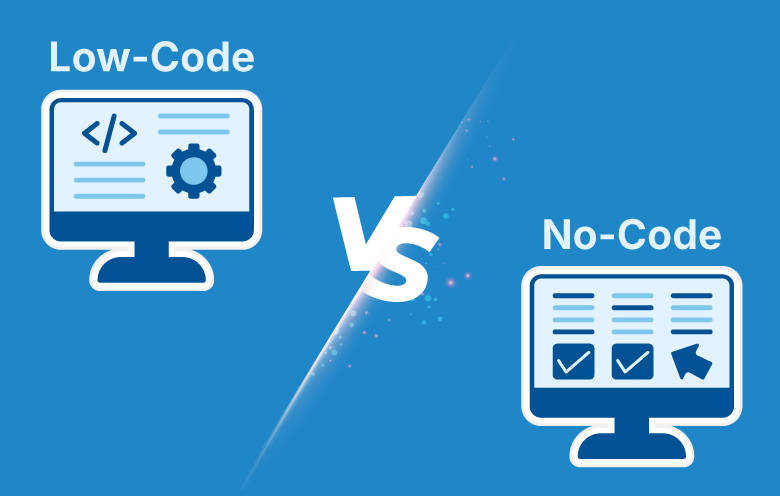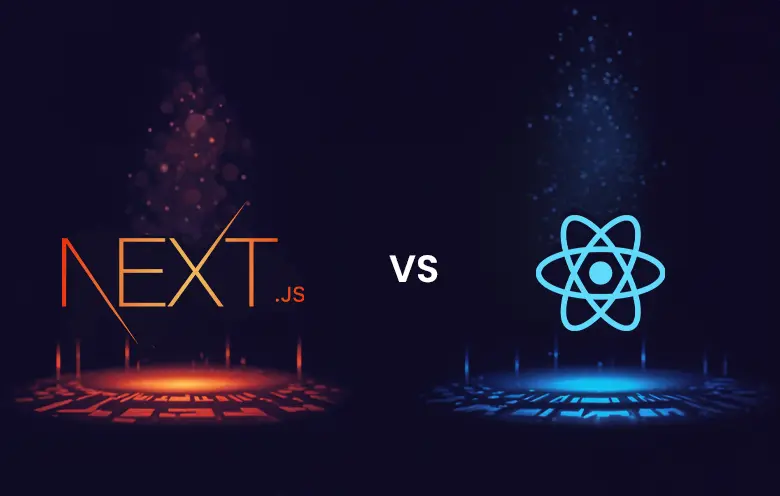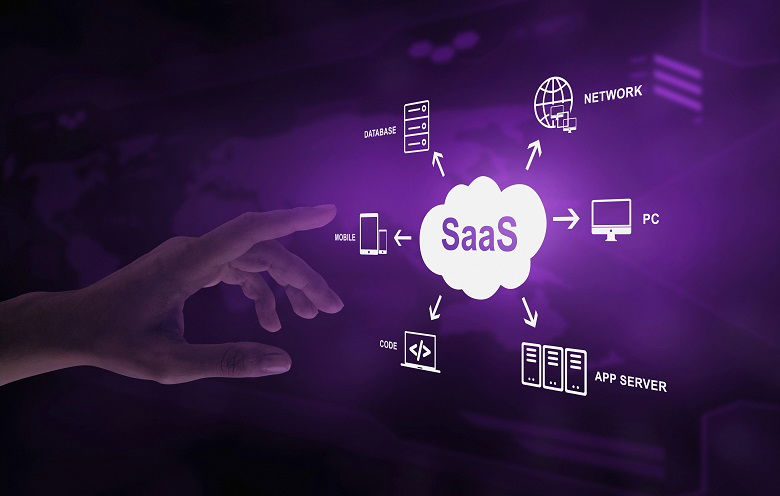Full stack development is experiencing an unprecedented transformation, with the inculcation of artificial intelligence. From intelligent automation, predictive possibilities, and AI-enhanced user experiences, this new evolution of full stack development is reshaping how applications get developed, deployed, and scaled. Organizations can utilize AI-led methods that automate processes, reduce expenditure, and speed up development time. Whether through embracing cutting-edge tools or collaborating with full stack development companies who have expertise in developing full stack solutions, organizations can achieve innovation and agility.
In this blog, we will discuss how AI is transforming full stack development and what it implies for the delivery of applications in the future.
The role of AI in full stack development
AI is revolutionizing full stack development through automation of workflows, user experience augmentation, and system performance improvement. From code generation to deployment, Artificial Intelligence (AI) makes complicated processes simpler and shortens development times.
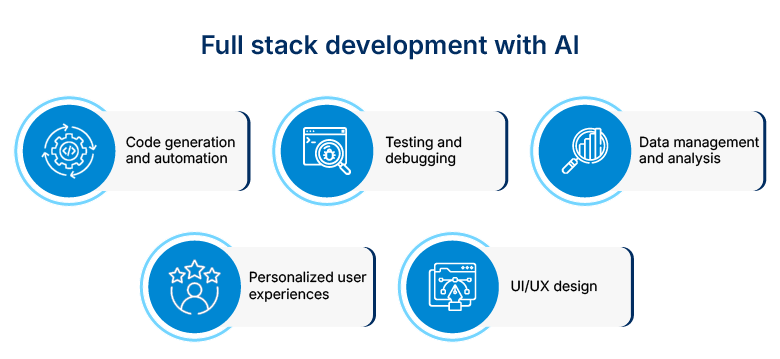
-
Code generation and automation
AI automates tedious coding activities like generating complete functions, suggesting code snippets and boilerplate code generation, speeding up the development cycle and decreasing hands-on work in coding.
-
Testing and debugging
Automated tools create test cases, identify critical tests, and run tests with no intervention, speeding up debugging and testing cycles. AI identifies bugs early in the development life cycle, emulates user interactions, and offers more stable deployment.
-
Data management and analysis
AI is changing the way data is managed with full stack development. It streamlines data management for business professionals. They can identify trends and patterns and also drive a more data-driven decision-making process. AI automates Extract, Transform, and Load (ETL) pipelines, and enhances integration processes, which helps organizations ensure quick and accurate data flow.
-
Personalized user experiences
AI algorithms examine user behavior and interests to personalize applications for specific needs, offering a tailored user experience. It offers customized suggestions, responsive content, and dynamic user interfaces.
-
UI/UX design
AI enhances user interface and user experience centric designs. It can help develop responsive user interfaces. It offers predictive text input, real-time image recognition, and dynamic layouts. It also scans individual behavior, interface designs, and adjusts content, enhancing user engagement.
Benefits of full stack development with AI
Full stack development with AI speeds up project delivery by automating intricate work and improving code efficiency. It also facilitates intelligent, highly customized user interactions on web and mobile platforms.
1. Increased efficiency
AI-powered full stack development process provides a complete overview of front-end and back-end technologies, ensuring errors are fixed in no time. With this capacity for making rational technical choices, productivity and project flow get boosted. They enjoy better flexibility and more control over the projects and hence save time and provide quicker results.
2. Reduced cost
Full stack development with AI is a very cost-effective solution for businesses with limited budgets. Merging front-end and back-end operations with AI-driven tools automates coding, testing, and optimization. All this is done without having to recruit multiple professionals for the job.
3. Stay ahead of trends
The process of full stack development is easily incorporated into new technologies such as machine learning, block chain, and AI. They facilitate the creation of dynamic applications that increase user interaction. Therefore, organizations can create applications that can make them competitive.
4. Hassle-free upgrades
Combining AI in full stack development optimizes the entire development process with an efficient and responsive user interface. This diverse technical expertise easily integrates with emerging features as technology advances making websites dependable, current, and future-ready.
5. Ongoing support
AI in full stack development offers continuous support as it quickly fixes bugs and updates across the front-end, back-end, and database. It maintains smooth performance after launch through regular maintenance and security implementations.
AI-powered full stack development infrastructure
AI full stack development requires both conventional and modern development skills along with experience in AI and data science. Expertise in AI frameworks such as TensorFlow and PyTorch helps with the front end development processes. And expertise in technologies such as Node.js and Django helps with the development of robust back-end systems.
Full stack development with AI for front-end
Front-end in full stack development refers to the part of the web application a user interacts with or observes directly. It has to be intuitive, responsive, and engaging. AI allows experts to code and design user interfaces very quickly.
- Uizard
Uizard is an AI-driven design platform that is used to turn wireframes and sketches into code. Uploading wireframe Uizard turns it into HTML or design mockup accelerating front end development process. This helps full stack developers to quickly create prototype ideas while closely working with UI/UX designers.
- TensorFlow.js
TensorFlow.js uses machine learning within the browser, to create user input smooth and smart. It supports on-device processing, improving speed and privacy in front-end development. TensorFlow.js builds AI applications with no back-end dependencies.
- OpenAI API
OpenAI API employs advanced AI models to execute input, produce content-aware responses, and carry out intelligent actions in applications. It simplifies full stack development by directly integrating front-end and back-end systems. Ultimately, the full stack development process becomes faster and more efficient. Therefore, development teams can create intelligent and interactive applications.
- Google Vision API
Google Vision API applies AI-based image analysis for object detection, text extraction, and face recognition from images. It facilitates both front-end and back-end development through real-time image processing as well as integration with web and mobile applications. Google Vision API can be utilized to create smarter applications with automated image recognition, visual search, and improved user experiences.
Full stack development with AI for back-end
The back-end system is more complex than the front-end as it includes scaling server infrastructure, optimizing database management, and securing API. As backend is time consuming, integrating AI streamlines the complete process, and saves time.
- PyTorch and TensorFlow
PyTorch and TensorFlow provide frameworks to develop, train, and deploy machine learning models in backend systems. They help with data processing, real-time predictions, and easy integration with third-party APIs and databases. Additionally, they can help with back-end development to produce AI-powered applications.
- FastAPI & Flask
FastAPI and Flask support effortless integration of AI models into backend applications through proper management of API requests and responses. They enable deployment of machine learning models as RESTful APIs for real-time AI services. FastAPI and Flask can be utilized to implement fast and scalable backends enabling AI-powered features and seamless real-time data processing.
AI-powered deployment and DevOps
Full stack development includes important factors such as performance optimization, security, and scalability. Let’s discuss some tools that can enhance full stack deployment when combined with AI.
- TravisCI and CircleCI
TravisCI and CircleCI are widely used CI/CD tools because they simplify automated testing and deployment. When integrated with these AI platforms, they can refine pipelines. Business teams can anticipate failure, enhance resource allocation, and tweak workflows automatically. In full stack development, it helps streamline routine tasks and deploy AI-assisted code.
- Visual Studio Code
Visual Studio Code with AI-driven extensions such as GitHub Copilot can help identify errors, automate code suggestions, and enhance code quality in real-time. AI minimizes deployment time by making debugging and testing faster. This feature streamlines development lifecycle enabling faster building, testing, and deployment of applications with fewer human errors.
- Docker
Docker integrated with AI simplifies the deployment of AI models. It helps package them with all dependencies into portable containers. Additionally, AI can automate container management and resource management. Using such a platform, AI models can be tested, deployed, and scaled across environments. And as for full stack workflow, it helps with development, testing, and deployment of all types of AI applications.

Full stack development challenges and solutions
Full stack development usually face problems like managing complex tech stacks and juggling front-end and back-end requirements. These can be solved with efficient collaboration, continuous learning, and suitable tools.
1. Deployment and integration
Challenge:
Deployment management and ensuring continuous and smooth integration is a major challenge in the process of full stack development. As quality requirements are high, updates take place often and launch schedules are hectic, it becomes difficult to streamline the process without breaking what already works.
Solutions:
- CI/CD pipelines: Automate build, deploy, and test using tools such as Jenkins, GitHub Actions, or GitLab CI.
- Version control: Manage code changes and collaborate seamlessly with systems like Git.
- Containerization: Maintain consistency across environments using Docker and other container technologies.
2. Cross-platform compatibility
Challenge:
Cross-platform development undergoes challenging processes like complex integration, performance limitations, and unpredictable user experience across platforms. Professionals struggle with ensuring compatibility, learning new technology, and building responsive UIs that meet standards.
Solutions:
- In the first stage, set the platform-specific requirements and use designs that are easy to customize and provide uniform performance.
- Then select robust cross-platform frameworks and perform extensive testing to ensure compatibility with platform updates released lately.
3. Security
Challenge:
It is a major challenge in full stack development to integrate security. The web development team will need to secure both front-end and back-end systems against cyber-attacks and data theft.
Solutions:
- Perform regular security audits: Regular audits ensure vulnerabilities are detected and corrected early on, avoiding security breaches.
- Implement reliable security tools:Employ established frameworks such as JWT for authentication and adhere to OWASP recommendations in order to ensure strong protection.
Future of AI in full stack development
Incorporating AI into full stack development is fast-evolving and changing the way applications are developed and released. Some prominent new trends are:
- AI-powered code creation and automation: AI will speed up development with auto-code generation, minimizing human effort and accelerating delivery.
- AI cybersecurity: AI will improve security with real-time threat detection, automated response, and more intelligent vulnerability management.
- AI-driven accessibility features: AI will enhance web accessibility with dynamic interface adaptation to varied user needs and preferences.
- Augmented Reality (AR) and AI: AI will drive AR experience with more intelligent object detection, real-time data overlays, and customized interactions.
Integrate AI today to future-proof your full stack solutions
Artificial Intelligence (AI) has turned into an essential force behind rapid and effective full stack development, enabling the creation of smarter, speedier, and more responsive web applications than previously conceivable. By tying AI development with full stack development, companies can accelerate product launch cycles, remain in pace with marketing requirements, and provide improved user experiences without compromising quality.
If you want to remain ahead of the game, now is the time to discover the ways in which AI-based full stack development can revolutionize your next web project. Whether you opt to increase your internal expertise or to work with a full stack development company that specializes in this growing market, utilizing modern technologies can put your business firmly in the competitive driver’s seat.
FAQS
1. What is AI-powered full stack development?
AI-powered full stack development combines artificial intelligence with front-end, back-end, and database technologies to build smarter, faster, and more adaptive applications. It leverages AI for tasks like automated code generation, intelligent testing, enhanced user experiences, and efficient deployment.
2. Which AI tools are most commonly used in full stack AI development?
Some of the most commonly used AI tools in full stack AI development include TensorFlow, PyTorch, and OpenAI API for building intelligent features. Platforms like Docker and Kubernetes streamline deployment and scales AI-powered applications.
3. What are the current trends in AI impacting full stack development?
Current AI trends impacting full stack development include AI-driven code generation, intelligent automation, real-time cybersecurity, and enhanced user personalization. These advancements are streamlining development workflows, enhancing application performance, and enabling faster, smarter deployments.
4. Can I use AI in web development?
Yes, you can use AI in web development to automate coding, enhance user experiences, improve security, and streamline deployment. AI tools can personalize content, enable intelligent search, and optimize both front-end and back-end processes for faster, smarter development.
5. Is full stack development with AI useful to make applications more secure?
Yes, full stack development with AI significantly enhances application security by enabling real-time threat detection, automated vulnerability scanning, and faster incident response. AI-driven security tools help professionals proactively identify risks and strengthen protection across both front-end and back-end systems.
